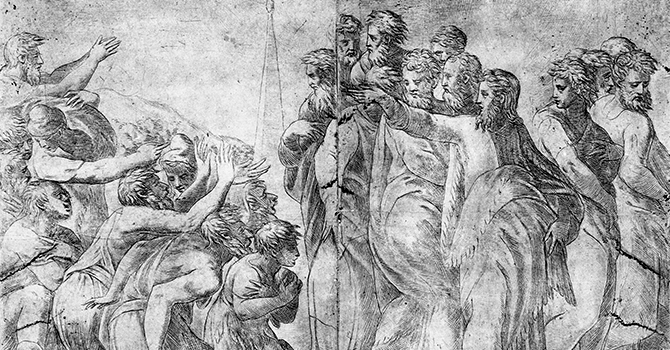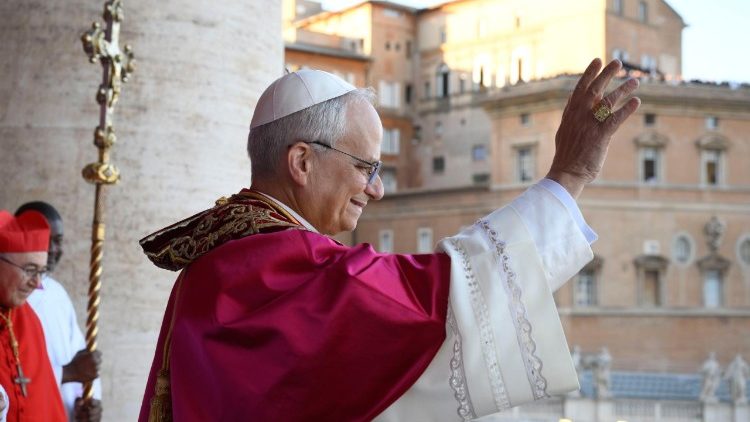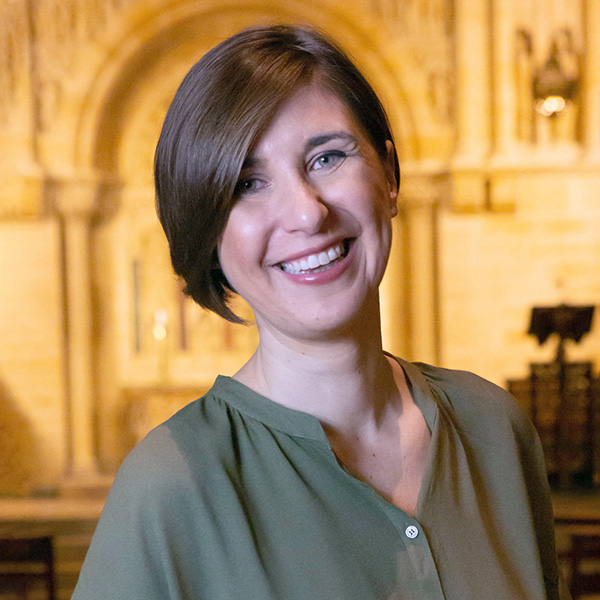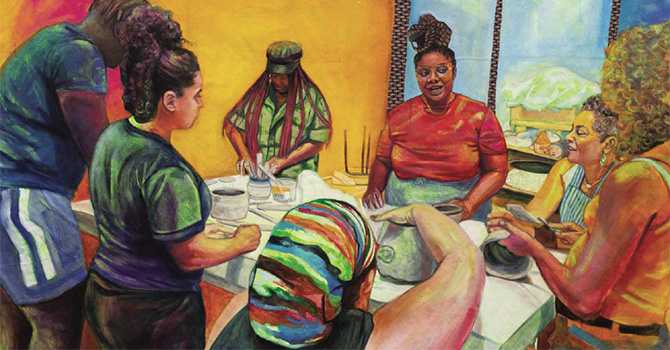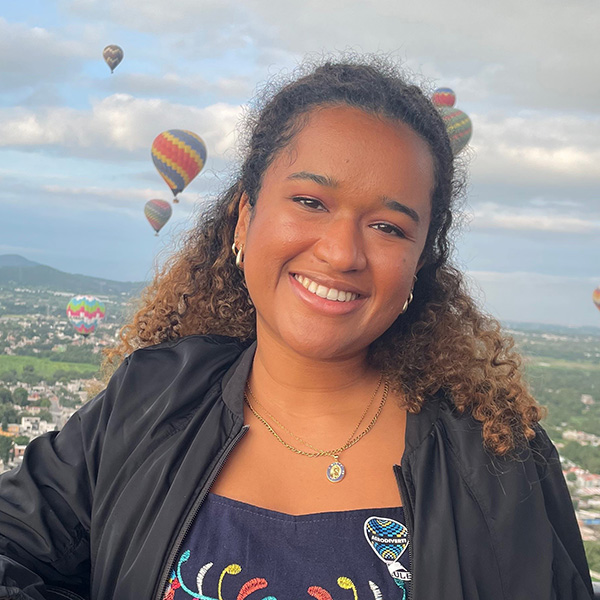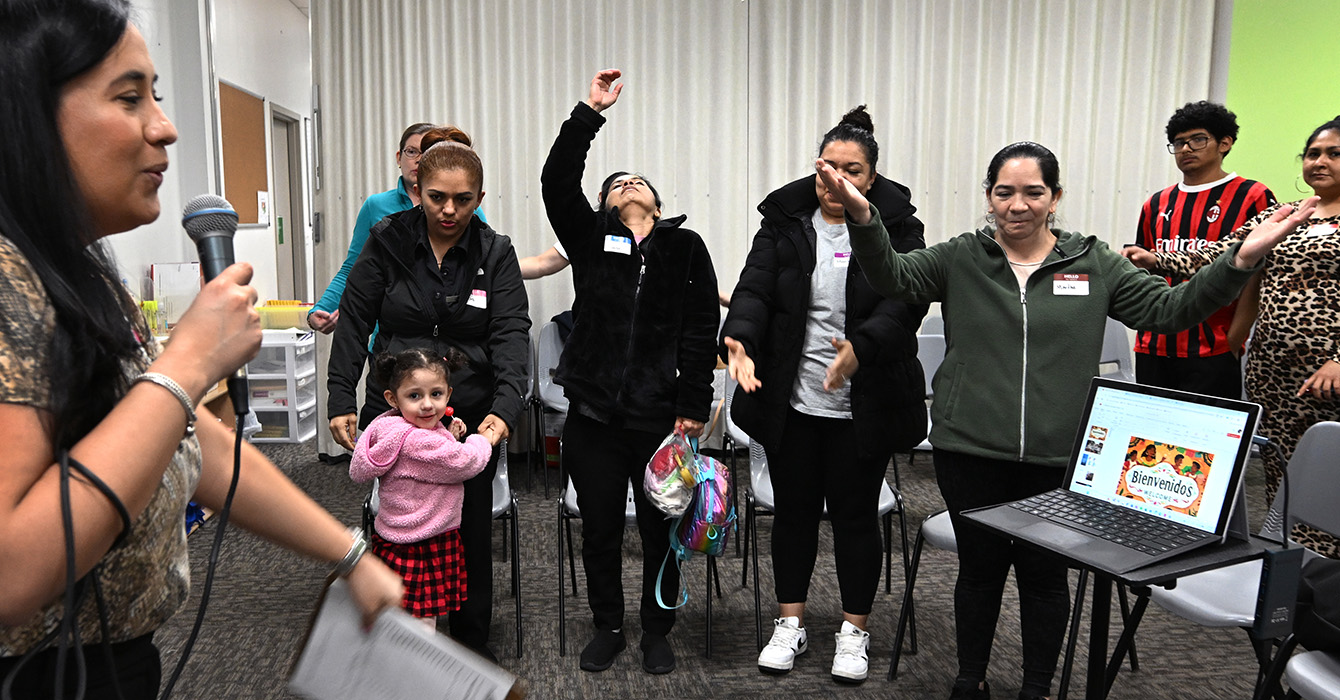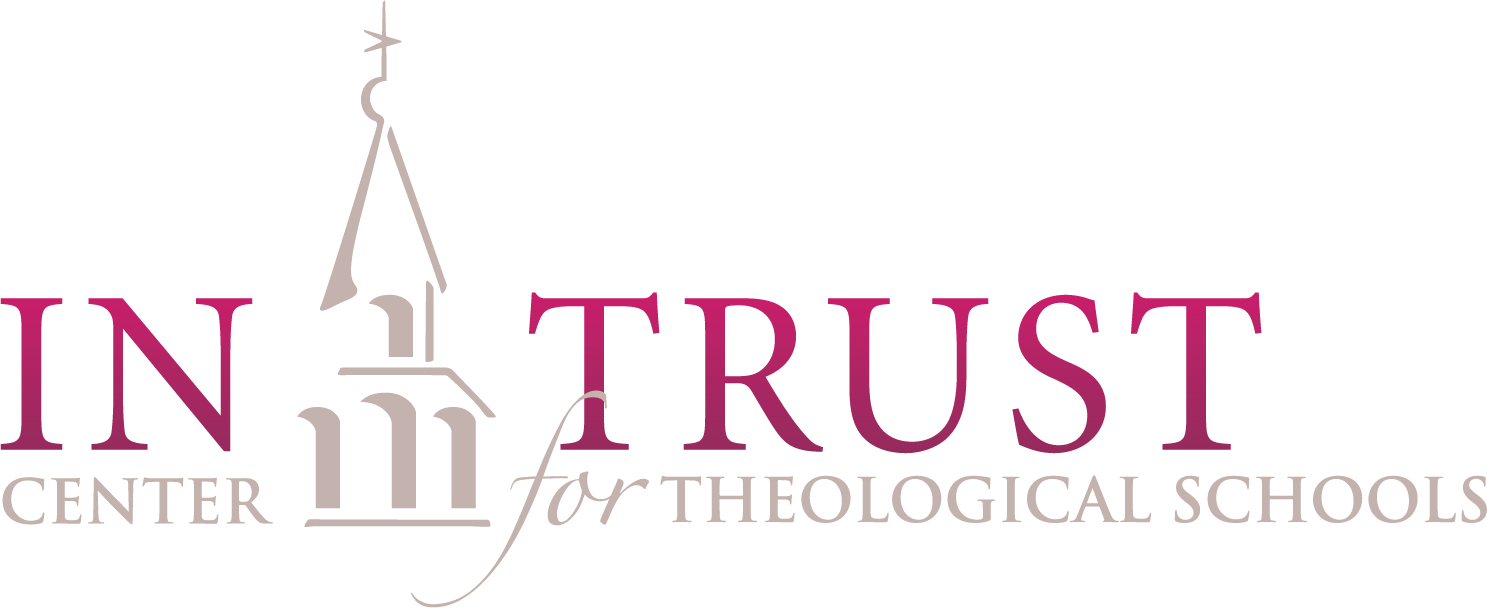As a sociologist, Jennifer M. McClure Haraway knows that relationships are good for people — many studies show this. In her new book, she makes a related argument: that relationships are good for congregations.
“Congregations need that kind of support just as much as we as humans do, because congregations are living organizations,” she said.
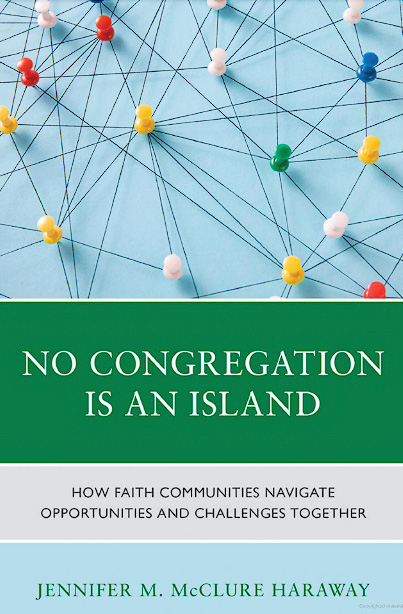
In her new book, “No Congregation Is an Island: How Faith Communities Navigate Opportunities and Challenges Together,” McClure Haraway identifies the types of relationships between congregations and the ways in which those relationships can benefit them. She also offers advice on developing congregational connections.
McClure Haraway, an associate professor of religion and sociology at Samford University, studied congregations in an eight-county area of central Alabama that included the cities of Birmingham and Tuscaloosa. She collected data through a survey of 438 (mostly Christian) congregations and conducted interviews with 50 ministers and leaders from 19 denominations and traditions. She explored the ways that relationships helped congregations and asked leaders to share stories about those relationships.
She talked about the findings of her research and shared her advice for pastors and churches seeking to establish and maintain congregational relationships with Faith & Leadership’s Sally Hicks. The following is an edited transcript.
Faith & Leadership: Why is it important for congregations to have relationships with other congregations?

Jennifer M. McClure Haraway: When we as humans are going through a difficult time or we have an exciting opportunity, it’s helpful to reach out to others for moral support, for advice, for practical help. And I think that applies to congregations as well.
F&L: What kinds of support can congregations offer each other?
JMMH: In the book, I talk about three main types. The first one is emotional support. And that’s, “I care about you. I love you. I’m here for you. I’m happy to listen; I’ll let you vent.” Of the three kinds of support, that is the most important kind — to help us know that someone’s there for us, that someone’s rooting for us.
The second kind is informational support. Sometimes we need more than just emotional support; we need practical advice or information or resources on how to do something that we need to do.
The third kind is instrumental support, and that’s where we help someone do something. In the U.S., many congregations are small — under 100 people on a given weekend — and many congregations do not have the resources to do all the things in ministry that they would like to do. It can be very helpful for congregations to collaborate and pool resources.
F&L: What would be your, let’s say, three top pieces of advice for clergy or congregations who realize they could use more connection in their communities?
JMMH: The first thing is to do what you can. Many ministers and congregational leaders have too much to do and not enough time to do it. I don’t want this book to become one more thing that they don’t have time to do. If all a congregation can do is the very most convenient and easy-to-develop idea, that’s better than nothing. The first thing is to do what you can.
The second thing is to nurture close relationships. It’s very important to have close relationships where there’s a lot of trust and where there’s a lot of interaction, frequent interaction, and there’s mutual support. So I’m going to be there for you and you’re going to be there for me, no matter what.
We really need those kinds of relationships. And those kinds of relationships can weaken if they’re neglected. They’re very important to invest in.
But my third piece of advice is not to forget about acquaintanceships. They may not seem as meaningful; they may not give us the same rich support as friendships. But because they can typically give us access to a wider range of information and ideas and resources and opportunities to collaborate, it’s important to keep them in mind.
F&L: You did your research in central Alabama. Are your findings particular to that context, or do you think they can be more broadly applicable?
JMMH: I think they can be more broadly applicable. There are thousands of research articles on social support and on those three kinds of social support, which happen across numerous settings. It’s not just something that happens among individuals in central Alabama. It’s not just something that happens among congregations in central Alabama. It happens everywhere in lots of different kinds of relationships.
The other reason I think it’s more broadly applicable is the other main concept that informs the book — “homophily”— which can be described in the phrase “birds of a feather flock together.”
We tend to prefer relationships with people who are similar to us in at least some way. In the book, I look at relationships within the same religious group, those that bridge across religious groups, those within the same racial group, and those that bridge across racial groups.
Homophily is also something that shows up in numerous studies in lots of different settings — friendships, marriages, work relationships, choosing what congregation to attend, which colleagues you become friends with at work. It shows up in so, so, so many settings. It’s something that is widely seen around the world as well.
F&L: You’ve studied all kinds of relationships. Do you find one type to be better than the others, or are they all pertinent in different ways?
JMMH: I think they’re pertinent in different ways, and they have different benefits and drawbacks. So when we think about relationships with congregations that are similar to us, those are the most convenient to develop. It’s sort of like the low-hanging fruit. If they have to go to denominational meetings anyway, then it’s a really easy way to build relationships with other ministers at other congregations. And so they’re very convenient, and they tend to be more trusting.
When there’s a shared theology and a shared approach to doing ministry and a shared governance structure, that trust makes it easier to share ideas and resources and to trust the ideas and resources that we get. It makes it much easier to collaborate. It’s much more convenient, because that trust is already there.
But one of the downsides is that you don’t get as wide a range of information. If you’re swimming in the same pool or breathing the same air, you may not get as wide a range of information.
So there’s a pastor of a megachurch, who’s part of a large church planting network, who talked about how when he goes to those network meetings, he absolutely loves all the information that he gets. And it’s all very pertinent to his church. But he also would love to sit down with his mom’s Methodist pastor, because he would get more ideas and resources there that he wouldn’t get through the network that he’s part of.
I think it applies to race as well, because there are barriers that hinder relationships between racial groups. A preference to build relationships within one’s denomination is sometimes by default a preference to build relationships within one’s racial group, because so many denominations are mostly racially homogeneous.
Or a preference to build relationships with other local nearby congregations is often by default a preference to build relationships with racially similar congregations, because of racial segregation. And then there are theological differences or political differences that can become barriers as well.
In my study, I found that most congregations by default are building relationships within their own racial groups, because they’re much more convenient. But there are benefits to bridging to different organizations.
Now, I would say the big downside of those relationships is that they’re not as close. I had a Muslim leader who said, “Well, we’re happy to work with other congregations toward social justice and making the community better, but when there’s a difference on a moral view, we’ll just go our own way.”
So they tend not to be as close, but congregations [willing to bridge] typically get a wider range of information and resources and a wider range of opportunities to collaborate.
Congregations that want to serve in the community who bridge across different religious groups or across different racial groups often hear about more opportunities. Our social circles where everyone knows each other and is really tightknit tend to be people like us.
When we have acquaintances, our acquaintances are less likely to be like us, and they’re more likely to be in other social groups. But those acquaintances can help us get a wider access to things.
F&L: So the advantage of people near you is that the relationship may be closer, but it may not offer you as much exposure to new things as a relationship across difference, which may be less close but offer you more in terms of new ideas or information or resources.
JMMH: Exactly.
F&L: So when you describe relationships, are you mostly talking about relationships between clergy?
JMMH: I look at four different kinds of relationships, and they’re not the only kinds of relationships that can exist between congregations. I look at friendships between the ministers, joint events between the congregations, ministers being involved in ministerial associations or clergy peer groups together, and then pulpit exchanges, where a minister is preaching or teaching or speaking at another’s congregation.
Even if the tie between some congregations is a friendship between their ministers, it still has a bigger impact than just those individuals. One minister might be able to share something — say, a resource that some lay leaders put together on faith formation for youth — with a minister at another congregation, who then shares that with their church’s youth ministry.
And there’s research that shows that for clergy who are involved in a ministerial association or clergy peer group, their well-being tends to be better, and they tend to get helpful resources in that group that they can then share to lead and minister more effectively in their congregations.
One of the examples I give in the book is two ministers talking, and one says, “Hey, this is really hard. I want to quit.” And the other one says, “Me too. Let’s go get lunch.” And then at the end of the day, neither of them quits. It’s good for both of their congregations that they were there to support each other.
F&L: You mentioned cross-racial relationships. How common were they in the congregations you studied?
JMMH: Only 30% [of the relationships] were between congregations with different racial compositions. And half of the congregations did not have any relationships with a congregation that had a different racial composition.
I think there are important benefits of bridging across racial groups, especially (and this is not unique to central Alabama) in a setting where there is a long legacy of racial injustice and where there’s still significant inequality and segregation by race. And so I think they’re important for helping to heal those divides.
But the difficult thing is that if a congregation doesn’t go about building them carefully, they can undermine what they’re trying to support. It can be easy for predominantly white congregations to unintentionally undermine congregations of color by assuming that [a white congregation] needs to come in and have all the answers and fix things. Or by not understanding the histories and dynamics that have gotten things to where they are and not working in mutually reciprocal ways with congregations of color.
That’s the chapter of the book where I give the most nuanced advice on how to build those relationships, because when they’re not built well, they don’t help to bridge the divides. They can make them worse.
F&L: In your experience, is it primarily white congregations reaching out to congregations of color, or does it go the other way as well?
JMMH: I didn’t have a way to quantify that, but in my interviews for the book, I was seeing it going from both directions. And there was often some kind of mediating organization, like a nonprofit a predominantly white congregation would work with that had connections to predominantly Black congregations. Or a racial reconciliation program that would bring together congregations and match congregations with different racial compositions to worship together and have meals together and serve together and have events together.
But there were also just ministers who did a good job reaching out across those divides and being bridges across those divides, though some of them faced pushback for doing so.
F&L: When you look at the research, what do you think is the most important finding?
JMMH: The most important thing that I want people reading the book to take away is that they’re not alone. And that regardless of what opportunities or challenges they’re experiencing or what support they do or do not have in their local context or in their religious group, I want them to know that that support is out there and give them practical ways to build relationships to access that.
If all a congregation can do is the very most convenient and easy-to-develop idea, that’s better than nothing. The first thing is to do what you can.


